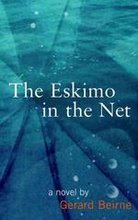That's Me! That's Me! - A Writing Guide
In 1958 you wrote "Pandemonium". What does pandemonium mean? What was the concept of this?
The concept, "pandemonium" was a word first used by John Milton in a very long English poem called "Paradise Lost". Pandemonium comes from the Greek "pan", meaning all and "demonium", meaning the demons. The idea of pandemonium is that in recognizing something - for example, recognizing a face or a character on a page - we have a little demon for each feature, for each part of the picture. And when the demons see themselves in the picture they shout, That's me! That's me! and then a higher level demon listens to these other demons and decides who shouts the loudest. If you are reading a character, a letter in a word, if the higher level demon hears the "A" demon shout the loudest, then he knows it is an "A". The idea is that we have separate neural nets, say, representing the demons, and what they shout, their output, is the amount of themselves that they see, that they perceive in what they are looking at.
So it's a network of neural networks at the end.
Yes, in the long run neural networks will have to be built up of pieces that are neural networks. But they still have to work together. Then the whole system does not have simple purposes or goals but very complex ones, just like people. In that sense the neural network is very different from the network of computers which we are talking about now because here it is a social thing. In our society not every piece, not every computer wants the same thing. They want to communicate but not because there is a single purpose; they want to communicate because everybody wants to do something different. In the neural network, in the good neural networks, they are all contributing to the same end.










No comments:
Post a Comment